Customer Acquisition Guide: How to Do It in 2025
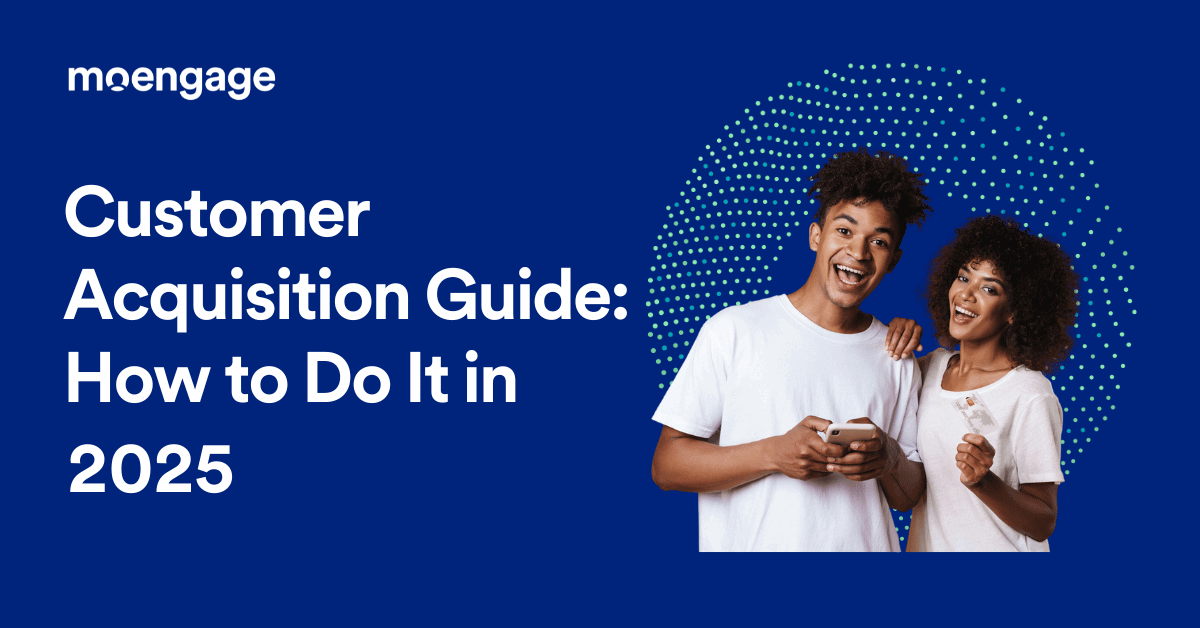
Reading Time: 9 minutes
Customer acquisition is one of the most prominent strategies that can help you generate and hold onto those qualified leads all brands need. And it’s no secret that more than most marketers are heavily focused on customer acquisition:
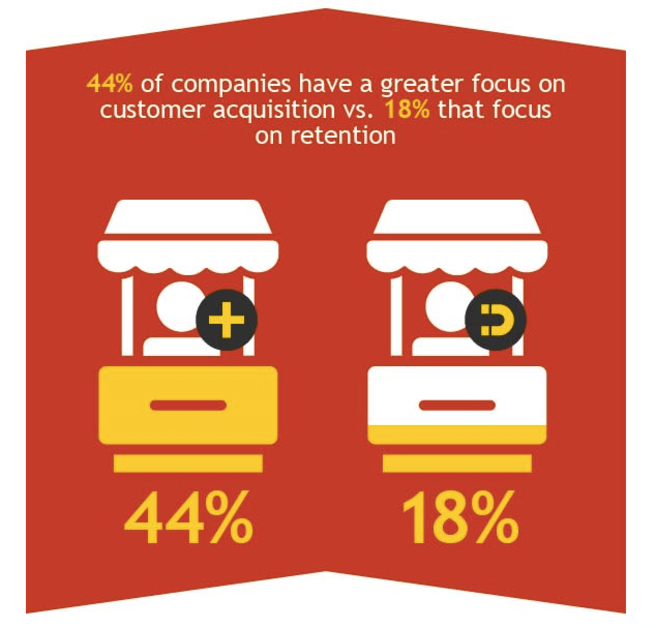
But how can you attract customers that matter and map their customer journey effectively?
How can this be done in an affordable way, especially while acquiring new customers, retaining old ones, and extending their Customer Lifetime Value (CLTV)?
Finally, how can you be different from the rest of your competitors, and how can you be top-of-mind regarding your niche?
This post has all your answers on customer acquisition and retention and gives away handy customer acquisition strategies!
Customer Acquisition: A Definition
When talking about customer acquisition, we’re referring to all the techniques through which a brand can get new customers to familiarize themselves with its products and eventually proceed with a purchase.
A customer acquisition plan is to attract the correct type of leads, assist them in their customer journey, lead them down the sales funnel, and, eventually, sell them the item, product, or service that is just right for them.
To simplify things, customer acquisition involves all actions – from a perfect design that’s eye-catching to creative marketing techniques, email templates that are tailor-made and cater to each recipient, and a social media presence that’s spot-on and memorable, customer acquisition can turn your brand into the authority in your niche.
Acquisition and Retention: Techniques and Differences
Customer acquisition techniques like Facebook retargeting and email marketing are used to get customers to act on the CTA’s message.
Customer acquisition is there to boost your revenue, give you more sales, and keep customers satisfied – both the old and the new ones.
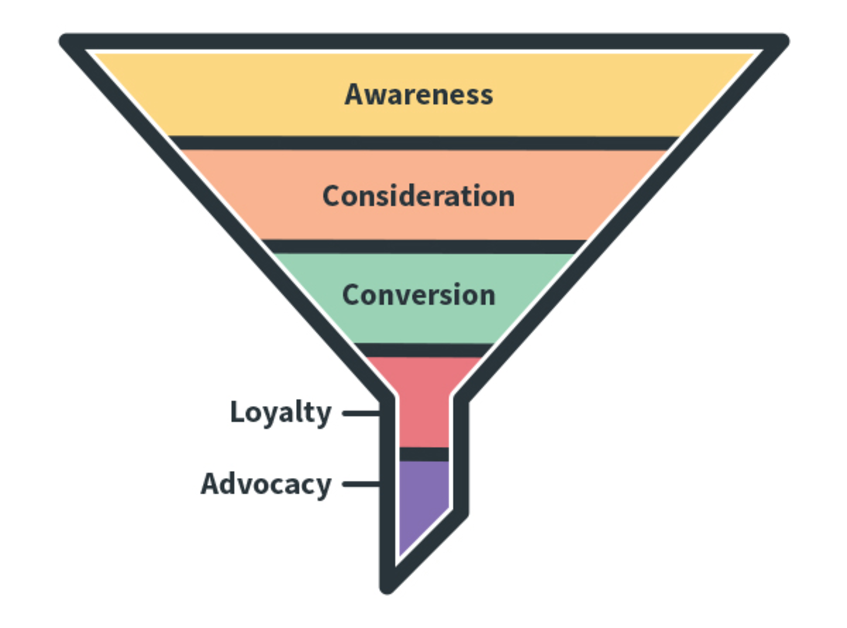
Prospects who move through the funnel aim to understand your brand first. Then, you should showcase your products and services to make them consider proceeding with a purchase.
But let’s clarify something first.
Customer acquisition and customer retention are two different things. Think of it that way: You’re on vacation, and there are two places where you can swim. The first beach is one you’ve already visited, whereas the second one is a new place you’ve never seen before.
Going to the one you’ve already visited would count as customer retention. On the other hand, visiting a brand new beach would be customer acquisition – you’re new, the place is unique, and you love it there.
What Is Customer Lifetime Value?
Of course, acquiring and keeping customers moving through your sales funnel while increasing their customer lifetime value (CLTV) is not a simple feat.
But how significant is this lifetime value when discussing customer acquisition and not customer retention? The answer is critical.
A customer with a good CLTV score—aka a customer who has been around a lot and has purchased quite a lot of products and services from your brand—will promote your brand because they swear it’ll change consumers’ lives.
To put it more simply, high CLTV means a high estimated profit from one customer throughout their lifecycle as a customer of your brand.
Here’s how to calculate the customer acquisition cost:

As you understand, the more customers stay with you, the more likely they are to share your content, subscribe to your newsletter, and get qualified leads without you investing too much time and effort. And here’s how CLTV is tied to customer acquisition.
But again, the question stands: How can you create a customer acquisition strategy when all’s said and done?
Customer Acquisition: The Strategic Steps of 2025
Having defined what customer acquisition is, it’s time to see the steps brands and marketers need to take, the techniques they need to invest in, and the channels that make customer acquisition work like a charm.
Email Marketing
There is a good reason why more than most marketers swear by the power of email marketing. When it comes to customer acquisition, lead generation, customer retention, and retargeting, a well-thought-out email marketing strategy can boost your ROI:
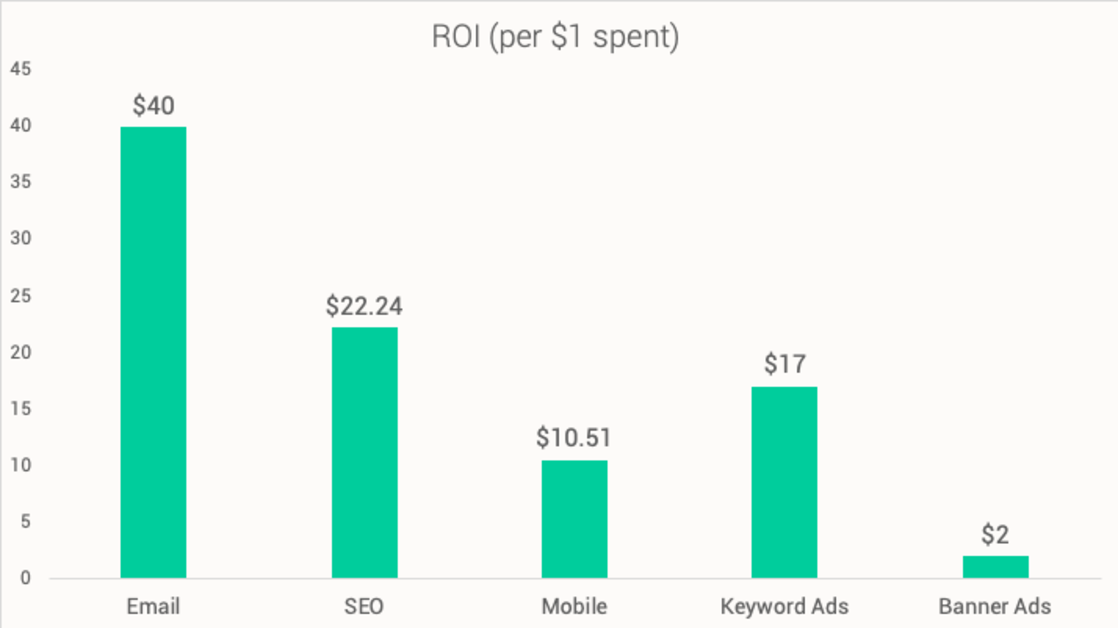
Email marketing’s ROI is measurable, affordable, and not subject to algorithm changes.
You need a great email marketing platform with an easy email editor and customizable templates, some imagination, and great segmentation options, and you’re good to go.
Lead Generation from Email Marketing
To acquire qualified and interested new customers, marketers create landing pages and subscription forms and then create an email list. This email list allows marketers to advertise without being sales-oriented by creating newsletters, promoting specific products and events, or simply sharing helpful information with their new customers.
Email marketing is a great way to stay top-of-mind by creating an open dialogue with your customers through informational, shareable content that can stand out in a full inbox and eventually help generate a set of loyal customers for your brand.
Of course, this is easier said than done! Especially since different customer segments need different content. You’ll need more than informational newsletters to move the top funnel leads a little further down.
How to Segment Like a Pro?
Gather data, study your audience and buyer personas, and create hyper-personalized content that can speak to each customer individually.
If you’re unsure about the content you need to use, just create a survey and interact with your customers by asking them. That way, you’ll know the type of email content to invest in for each funnel stage.
Also, always remember that each individual will respond to content differently. Some segments will love video content, while others will receive a hefty discount. Make sure to A/B test everything. This will show you how to stand out and create “funnel-appropriate” content.
Super Pro Tip: You don’t need customers who want to unsubscribe from your newsletter. So, make unsubscribing just as easy as subscribing.
Organic vs. Paid Channels
Customer acquisition requires using organic and paid channels to produce remarkable results. Organic channels include SEO techniques to keep your content ranking high for your selected keywords, blogging, content marketing, and organic social media posts.
SEO and Organic Channels
High SERPs, as a result of SEO, are highly sought after. The best way to achieve this is by creating stellar content that will find its way to a search engine’s first page(s), like Google or Bing. And we all know that search engines love a good content piece. This is why SEO and content marketing are two peas in a pot.
Investing in SEO as a customer acquisition strategy and optimizing your content for SERPs can generate significant revenue.
Think of it that way: As a potential customer, would you search further than the first page of Google?
The Importance of SEO Content
Create content that search engines can read quickly, with natural keywords, and don’t shy away from long-tail keywords.
If you are a SaaS business, you can create informative articles about the industry that are worth linking to. This will allow you to make use of SaaS link-building opportunities and earn quality backlinks, which will further improve your brand visibility and attract more customers to your business.
Customers no longer look for “best seafood restaurants,” for example. Instead, they’ll look for the “best seafood restaurants in New York.” Use that intent – it will also increase time spent on your page, seeing as they’ll find exactly what they’re looking for in terms of content. And if your content marketing includes this aspect, you will create a long list of loyal customers who will always remain faithful to your brand.
Remember to take advantage of your video and visual content keywords. Create transcripts and subtitles, use alt text, and create a cluster with relevant links to other “places” on your website, which will further help you acquire customers.
The Importance of User Intent
Of course, good quality content exists on every corner of the internet. The difference between quality and high-ranking content is the intent. Create blog posts and website content that is fun, exciting, and easy to interact with. This will get you all the attention you need, and you will look like a genuine brand, unlike a competitor who only aims to sell a product.
Also, remember that you can use other channels to have customers find themselves on your page organically. A social media post with a relevant link, a landing page, and an email newsletter with shareable content can all do the trick.
Inform, describe, and give the correct information at the right time.
Now, onto the paid channels.
The Value of Paid Channels
Paid ads, or PPCs, are ads placed directly at the top of Google’s results. Paid ads allow marketers to have a permanent place at the top. And while this may sound like a good solution – as opposed to SEO, which needs a lot of time, effort, and a great understanding of algorithm changes -you need both this and SEO to ensure your customer acquisition efforts are worth it!
Remember, customers have grown wary of ads and are looking for genuine connections and information. But it would be best to have ads and sponsored content, and you must always disclose that to your audience.
This will help you attract new customers who understand and don’t mind seeing ads here and there.
Paid Channels: How Are They Different?
Much like paid social media ads, paid search results are there to give you better exposure instantly. The difference between paid advertising from that SEO and organic social media is mainly that you don’t need to invest time and resources. Since it’s an ad, it’ll be right in front of your existing customer’s eyes.
Of course, having targeted paid ads that pop up in front of all your existing customers can make all the difference. Sponsored ads are fantastic for customer acquisition, but for customer retention, you’ll need to create helpful content that nurtures leads.
Combining organic and paid results is the ideal way to get your content out there and acquire interesting leads.
The Importance of Your App
App store optimization is a component most marketers don’t think about when starting their customer acquisition journey. However, mobile app marketing is the first step toward brand awareness.
Target the right keywords in your name and description. Like so:
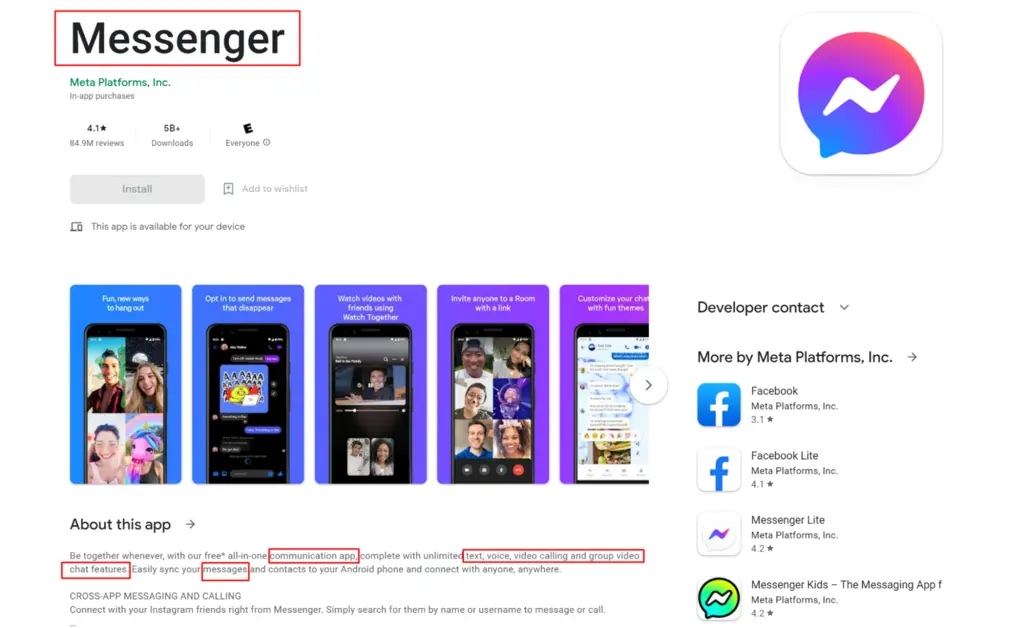
You see that understanding what the Messenger app does is a no-brainer.
Creating an app redirecting customers from your website to your app can benefit you and them. After all, mobile use has surpassed desktop use. Not to mention that there are generations of consumers with an app-first approach – like Gen-Z. You need to engage them as well.
Referral Programs
This is probably the oldest customer retention tactic, based on the human need to pass around good information. Not utilizing your existing customers and turning them into brand ambassadors is like leaving money on the table.
All of your customers carry specific characteristics and fall under a particular segment. The same goes for their social circle.
For example, parents will have acquaintances who are parents. If you have an E-commerce store with baby and toddler clothes, this crowd can bring you new, qualified leads in no time.
Of course, you’ll need to encourage your customers and give them incentives to boost their initiative. This is where a referral program comes into play.
Motivate Your Audience
Creating a referral program and promoting your products and services through your customers is one of the most surefire ways to boost your customer acquisition. And when done correctly, it’s cost-effective as well.
You can motivate your customers by giving out an incentive for each lead that signs up because of them. It could be anything from free shipping to a discount code or even a special gift for the trust you show to the company.
Incentives That Matter
Incentives may sound a little counterintuitive; offering one could weigh your budget down. However, you don’t need to provide something that will break the bank. Ensure the special discount will be released after the referral’s first paid interaction with your brand.
So long as there’s a solid reason for your existing customers to refer your brand to their peers – meaning that your product or service adds value – you’ll be good to go.
To create a referral program that matters, you can start by investing in surveys, quizzes, and user-generated content. Create a landing page with customer testimonials and allow customer acquisition to work for you by presenting your brand through your existing customers’ eyes.
Share the Love
And never forget to encourage shares, whether we’re talking about social media content or email newsletters. Share their content and let them share yours with their peers.
That way, your customers will encourage their social circle to join your brand and interact with it in some way. You’ll create the profile of a brand that loves its customers and cares enough about their opinion and how they use the products to share them around. Great customer acquisition strategy, isn’t it?
The Takeaway
Customer acquisition is probably the very backbone of any brand. And the reasons why are pretty obvious: without customers, your brand ceases to exist, and without new customers, it won’t experience the growth you want it to.
Of course, you can’t boost customer acquisition without creating a safe and transparent framework for your customer support and sales teams. Not to mention how much you need content, copy, and ads. And, of course, how important it is to train the customers to adjust to brand changes and promote your brand to their social circles. This will allow you to penetrate a significant chunk of your target market.
A customer-first approach is the core of all successful customer acquisition strategies, and this is not something many marketers realize. All you need to do is develop a customer acquisition strategy that will help you grab and hold onto the leads that won’t just fly by and will help you earn more.













